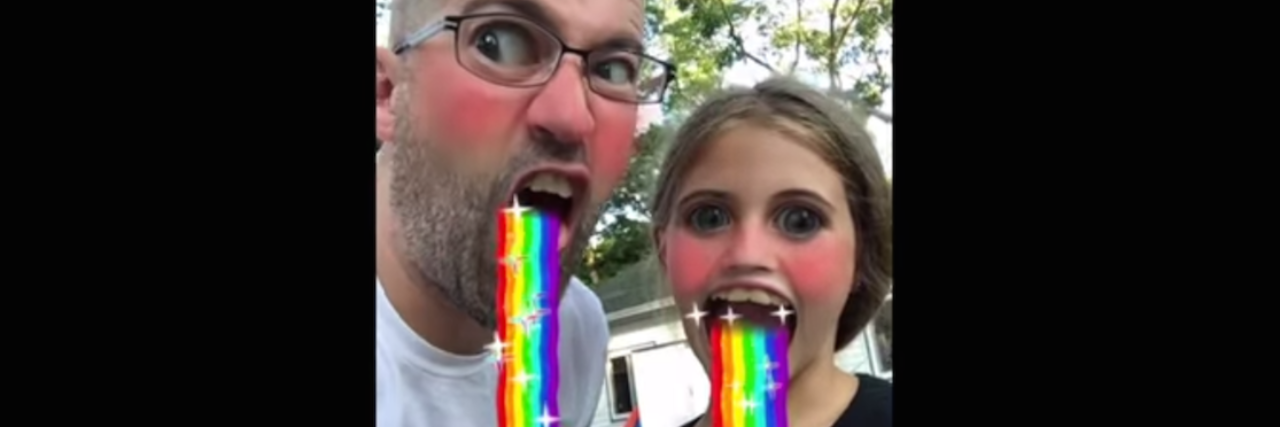This little puking dynamo is a great way to slowly face her fear. It takes something she finds scary and makes it, unexpectedly, fun. We love all the vomit lens variation – vomiting Ping Pong balls, vomiting pineapple, etc.
Keep them coming Snapchat!
Lenses make great beginner ERP. My daughter frames them as a level one or two anxiety. Perfect for simple reminders to fight back against her fear. (Yes, we build up to harder, more difficult ERP outside Snapchat.)
Overtime, Snapchat designers have upped their design game and their experiments have allowed us to do more ERP. Lately we’ve been using the scarier lenses, I’m talking about these X-Ray Skeleton and Zombie themed lenses. These test her OCD worries about intrusive thoughts and “bad people.”
The scarier lenses do induce OCD anxiety and this is a good thing. If we can start in a controlled environment, like Snapchat, we can work up to harder, real world exposures.
The lesson here is every little bit helps. And I’m thankful my daughter and I can use a platform we both love to help her stay strong. So thanks again Snapchat. For giving us one more tool to fight a tough disease.

